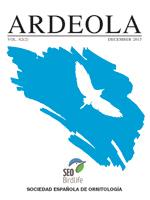The monk parakeet Myiopsitta monachus is a very successful invasive species and a worldwide agricultural pest. Knowledge of its nest tree selection could be a valuable pest control tool, given that its population expansion could be more effectively controlled by reducing potential nest tree availability. In this study we describe monk parakeet use and selection patterns of nest trees in five parks in Buenos Aires, Argentina. The species and structural characteristics of each nest tree was recorded. A census of potential nest trees was also performed to calculate Savage's selectivity index for each tree species. We found 128 parakeet nests in 60 trees. The tree species selected by monk parakeets were cedars Cedrus atlantica, araucaria pines Araucaria sp. and palms (Butia capitata,Washingtonia robusta, Syagrus romanzoffiana, Phoenix sp.). Cedars were particularly selected as nest trees: they supported 40% of all nests and held more nests per tree than any other species. This is the first study to reveal that cedars and araucarias are selected by monk parakeets. Nest tree selection is a context-dependent process and it is guided by tree species and their structural characteristics and phenology. According to our findings, it would be advantageous to implement a careful selection of the tree species to be planted in Buenos Aires City parks and in urban areas elsewhere, in order to properly manage potential human-bird conflicts.
How to translate text using browser tools
1 December 2015
Nest Building by Monk Parakeets Myiopsitta monachus in Urban Parks in Buenos Aires, Argentina: Are Tree Species Used Randomly?
Ivana P. Romero,
Mariano Codesido,
David N. Bilenca
ACCESS THE FULL ARTICLE

Ardeola
Vol. 62 • No. 2
December 2015
Vol. 62 • No. 2
December 2015
árboles de nidificación
crecimiento plagiotrópico
nesting tree
plagiotropic growth
Psittacidae
selección
selection




